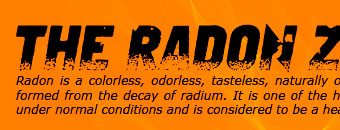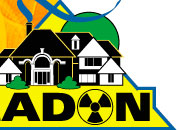 |
 |
 |
||||
|
||||||
| Call: 417-844-0942 | ||||||
|
Radon in Schools
Radon Could Be a Serious Threat to Your School Chances are you've already heard of radon - a radioactive gas that can cause lung cancer. But what you might not have heard is that high levels have been found in a number of schools across the country. Therefore, it is important that students, teachers, and parents be aware that a potential problem could exist in their school. A nationwide survey of radon levels in schools estimates that nearly one in five has at least one schoolroom with a short-term radon level above the action level of 4 pCi/L (picoCuries per liter) - the level at which EPA recommends that schools take action to reduce the level. EPA estimates that more than seventy thousand (70,000) schoolrooms in use today have high short-term radon levels. The only way to determine if a problem exists is to test for it. Having your school tested for radon is something you may want to discuss with your school officials. Because as real as the threat of radon is, the good news is that the problem can be solved. EPA's national survey of schools produced some alarming results about concentrations in our children's classrooms. Public awareness must be raised about the hazards of radon to hasten efforts to reduce the danger. All schools must be tested to determine if there is a problem, and schools must inform parents of the results. We cannot ignore this problem." Kathryn Whitfill, National PTA President. The EPA ranks indoor radon among the most serious environmental health problems facing us today. After smoking, it is the second leading cause of lung cancer in the United States causing an estimated fourteen thousand (14,000) lung cancer deaths a year.
Radon is a naturally occurring gas that seeps into buildings from the surrounding soil. In some cases, well water may be a source of radon. You can't see, taste, or smell radon. In fact, the only way to discover if high levels of radon are present is through testing. All students have the right to expect a safe and healthy environment. Teachers and other school employees should encourage their schools to conduct radon tests and undertake all necessary corrective actions. The health of our children demands no less. Keith Geiger, NEA President. Radon gas decays into radioactive particles that can get trapped in your lungs when you breathe. As these particles break down, they release small bursts of energy. This can damage lung tissue and lead to lung cancer over the course of your lifetime. An individual's risk of getting lung cancer from radon depends mostly on three factors: the level of radon, the duration of exposure, and their smoking habits. EPA recommends that all schools nationwide be tested for radon. To date, approximately twenty percent (20%) of the schools nationwide have done some testing. Some states have tested all their public schools.
How are schools tested for radon? Testing for radon is simple and relatively inexpensive. EPA has published guidance that is available free to schools throughout the country. Call your State Radon Office for more information. The basic elements of testing are: Test all frequently used rooms on and below the ground level; Conduct tests in the cooler months of the year; and, Follow the testing strategy below. School Testing Strategy: Step 1: Initial Testing: Take Short-term tests. Step 2: Follow-up Testing: Take a second short-term test in rooms where the initial level is 4 pCi/L or higher. Take a long-term test in these rooms for a better understanding of the school-year average radon level. Step 3: Take action to reduce levels if: The average of the initial and short-term follow-up test is 4 pCi/L or greater or the result of the long-term test is 4 pCi/L or greater. What happens if your school fails the test? Fortunately, even if your school does fail the radon test, the problem can be corrected. Proven techniques are available that will lower radon levels and lower risks of lung cancer from radon exposure. Every home should also take this test. School isn't the only place that students and teachers can be exposed to radon. Since children spend more time at home, high radon levels there can pose a much greater threat to their health. Once again, testing is simple and inexpensive. After all, radon is one health problem nobody should have to live with - at home or at school.
Call your state radon office for a list of radon device companies that have met state requirements. See www.epa.gov/radon/radontest.html for information on how to find a "qualified" radon service professional. For more information, call: 1-800-SOS-RADON (1-800-767-7236)
|
|
|||||



